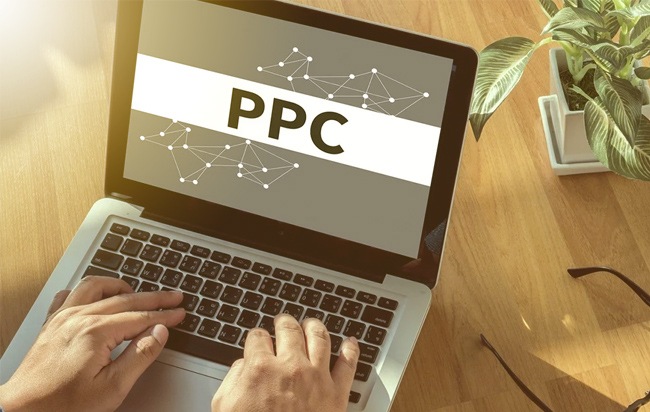
[Article updated July 2023]
Advertising your company has never been easy, and since the era of Mad Men, it has only become more competitive and complicated. In particular, online advertising can be a frustrating endeavor for large organizations as well as small- and medium-sized businesses.
The reality is that most companies that use Google AdWords don’t do a very good job. They put in the bare minimum effort to create their pay-per-click (PPC) ads, and then they just cross their fingers and hope for the best. This is a recipe for disaster.
A successful PPC campaign requires more than mediocrity; it requires knowledge and know-how. That’s where we can help. There are four key ingredients that we believe are vital to a successful AdWords PPC campaign.
1. The Right Keyword
Keywords demonstrate that you understand your customer and know what they want. There’s no point to advertising for a product or service that no one is interested in; it won’t matter how much money you spend. So, the key to a successful advertising campaign is figuring out customer demand.
Google AdWords Keyword Suggestion Tool is a free tool that will help you determine which words customers are searching for in Google by providing you with basic statistics such as average monthly searches, competition, and average bid. All you need to do is enter a phrase that you think your customers are searching for, and then Google will give you similar, relevant phases and tell you how competitive they are and how much it will cost to advertise.
To choose a keyword, first, you’ll need to make sure your targeting options are set to the appropriate location, language, and device. Second, make sure you check the boxes for Competition, Local Monthly Searches, and Approximate CPC. Third, turn on “phrase match.” Finally, start typing in phrases and click search.
To determine the best keyword, there are three things you need to consider:
a) Are people searching for this keyword? Look at Local Monthly Searches.
b) Are people who search for this keyword customers? Look at the Approximate CPC to determine if people are making purchases.
c) Can I afford to advertise for this keyword? First, you need to find your Max CPC by using the following formula: Max CPC = (profit per customer) x (1-profit margin) x (website conversion rate). For example, let’s say you make $100 per customer, and out of 100 website visitors, 10 become customers. That means you have a 10 % conversion rate. Then, let’s say you want a 25 % profit margin. The formula would be: Max CPC = $100 x (1-.25) x 10 % = $7.50. If your Max CPC is around the same as the Approximate CPC, you can afford the keyword.
To learn more about the various keyword match types, read this article from Google.
2. The Correct AdWords Settings
Choosing the network Correctly setting up your Google AdWords PPC campaign is a four-step process:
- Choosing the devices
- Setting the location
- Selecting a bid strategy
Search Network: This is a group of search-related websites where your AdWords ad can appear. When you advertise on the Search Network, your ad appears within Google and Google partner search results. This extends the Search Network to hundreds of non-Google websites (including directories) as well as YouTube and other Google partner websites. Google AdWords offers two different network options:
Display Network: This is a group of more than two million websites, videos, and apps where your AdWords advertisement can appear. The Display Network reaches over 90% of Internet users.
Search Partners: This extends the Search Network to hundreds of non-Google websites (including directories) as well as YouTube and other Google partner websites.
The default setting is “Search Network with Display Select,” however, that doesn’t mean it’s always your best option. If you’re running a search campaign, the “Search Network Only” campaign is best. And if you want to run a display campaign, you should create a separate campaign and only target the “Display Network.”
Typically, when you choose not to split the Search and Display campaigns, the majority of the budget goes toward the Display Network, delivering you fewer conversions. On average, a B2B/Technology company will pay approximately $116-$134 (Search Network) and $103-$130 (Display Network) to acquire a new customer/client.
After choosing the appropriate Display Network, you’ll need to choose the suitable devices. By default, Google will show your ad to Desktop, Mobile, and Tablet users. We recommend leaving this setting “as is” unless you don’t have a mobile-friendly site. In that case, check desktop only since mobile users that are sent to the desktop version of a site have a much lower chance of converting into a sale/lead.
Next, you’ll need to choose your location. By default, Google will target your campaign to all of the U.S. That’s very broad. In most cases, you’ll want to narrow down your audience to those areas that are most important to your business.
- If you are a brick-and-mortar business, you should target users within a 15-mile radius of your store.
- If you offer a service to certain areas of the U.S., you should target those states or cities.
- If you sell a product online and service the entire U.S., then you can leave this setting as is.
Finally, you’ll need to set your bid strategy. Many businesses choose to allow Google to manage their bids for them, and while this isn’t a terrible strategy, it’s also not the best. Instead, we prefer to manage our Bid Strategy manually. By manually setting our bid for every keyword, we can control how every dollar is spent based on our best and worst-performing keywords. This can be a complicated process, which is why we recommend having a professional set up your bid strategy for you.
3. An Irresistible Ad
Ideally, you should design two or three different ads for your campaign. Each ad should test a different element to see what is most successful at garnering clicks and conversions.
A good ad has four key elements:
- A keyword in the heading.
- An assertive sentence describing the benefit of clicking your ad over your competitors.
- A strong call to action.
- A relevant link to a landing page.
For example, let’s say you’re a tech company offering cloud services and after research, you decided on the keyword “cloud storage.”
99.9% Reliable Cloud Storage
Never Worry About Losing Data Again.
Sign Up for a Free Trial — April Only!
www.mywebsitelink.com
&
Enterprise Cloud Storage for $99
Unlimited, Safe & Secure Data Storage
Download Our Free Whitepaper!
www.mywebsitelink.com
These ads work well for a few reasons:
- The keyword that people are searching for is in the headline. This will let people know that your ad is relevant.
- It lists a price point or a benefit right away, so you target the exact audience you want.
- They both list the benefits of purchasing from your store “free trial” and “free whitepaper.”
- They both have a call-to-action “Sign Up!” and “Download!”
Each ad is slightly different, so they should have very different results. Once you know which one is working best, pause the other and create a new variation. Continue to modify your ads and test for success as frequently as your traffic allows. The more you test, the better your results will be.
4. A Conversion-Focused Landing Page
Writing a compelling and engaging ad that earns a click is only the first step, and that’s hard enough. According to a recent study by Display Benchmarks Tool, the average ad click-through rate is just 0.18%. Then, from there the average conversion rate is just 4.68%. That means if 24,000 people see your ad, only 4,320 will click on it and, from there, only 173 will actually convert into a customer. And that’s where a well-built landing page comes into play.
Sending your ad to the home page of your website means that every potential customer will be required to complete multiple steps just to make a purchase. Instead, the landing page for your ad should be directly onto a key product or services page. There should be little opportunity for your ad-click customer to get lost or confused.
Part of a strong landing page is a strong call to action (CTA). A call to action tells your potential customer exactly what you want them to do and makes it easy for them to complete the action. Some tips for creating a strong landing page include:
- Use words that provoke emotion or enthusiasm.
- Set the CTA apart using a button or with text that stands out.
- Keep it simple, clear, and concise.
- Make it feel exclusive (last chance, limited time only, ends tomorrow).
- Use powerful action verbs such as get, build, grow, save, join, etc.
Conclusion
The success of your B2B PPC advertising campaign doesn’t have to be a shot in the dark. By implementing the tips and tricks above you should be able to determine your ROI and make the necessary changes to get the biggest bang for your buck.
And, if it seems too complicated to you and you still can’t figure it out, contact Penguin Strategies today. We’d be more than happy to walk you through the process of setting up your PPC campaign and keeping it running.
Further Reading: PPC vs. SEO <<

by The Penguin Team on April 12, 2017
As a leading B2B digital marketing agency, We help B2B Technology Companies, enterprise software, and hardware companies increase brand awareness, reach more qualified leads and close more customers. Penguin Strategies is a Diamond Partner of HubSpot.





